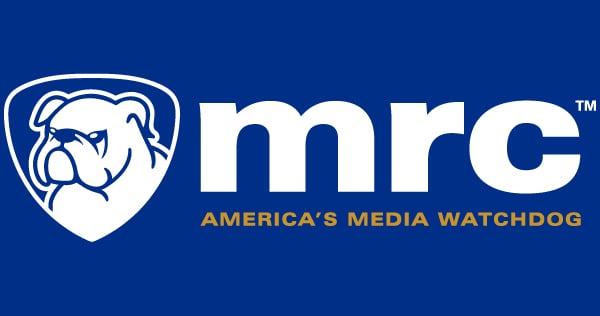Neutralizing Media Bias: How The Media Research Center Uses SnapStream
The Media Research Center (MRC) is a Conservative media watchdog group on a mission to neutralize media bias. Formed in 1987, the organization monitors dozens of hours of news every single day across 10-12 channels. In this blog, we will take a brief look at how SnapStream helped the MRC reimagine its archiving and workflows, make the transition to digital, and finally say goodbye to the VCR.
SnapStream Search Spotlight - July 2021
Each customer uses our news media video workspace in their own way, but it's always easy to see when trending moments command universal attention (you know, like billionaires heading to space).
As usual, July 2021 was packed with big news stories and our customers were all over them. Content producers were relentless in their quest to curate powerful video moments.
For the month of July, SnapStream users conducted 31,687 searches about people and events around the globe. Let's check out some of the biggest search topics.
How MailOnline Maximizes Speed & Access for its Video & Picture Desks
Like many media organizations, MailOnline's video and picture desk teams were using a variety of screen recorders and other grabbing tools to capture video-based news content. An encounter with the team from SnapStream at an event showed the world’s largest English-language newspaper website that there was a more efficient, effective way to equip and empower its global team.
SnapStream & Small Biz Insider Discuss the Power of Video Storytelling
Origin stories aren't just for superheroes and comic books. And we always love an opportunity to talk about how SnapStream went from a consumer DVR product to the news and media video workspace it is today.
Five Things Every Digital News Team Should Learn from ONA21
SnapStream Search Spotlight - June 2021
Each customer uses our news media video workspace in their own way, but it's always easy to see when trending moments command universal attention. As usual, June 2021 was packed with big news stories and our customers were all over them. Content producers were relentless in their quest to curate powerful video moments.
Skewed News: How Source Bias Affects Online News Engagement
“Spiderman’s the best!”
“Nope. Batman is.”
“D.C. Comics are lame. I’m Team Marvel all day!”
People love their opinions and often make their consumption choices in direct correlation. Superhero arguments aside, the reality is sources play a huge role in the acceptance of their content. Whether it’s The New York Times versus The Wall Street Journal, CNN versus Fox News, or Marvel versus D.C., Americans are highly-opinionated, picky, and skeptical about the information they ingest, especially depending on where they get it. Good luck convincing Uncle Earl at the barbecue that your favorite news blog is better than his trusty channel-of-choice.
SnapStream Search Stats - May 2021
Each customer uses our news media video workspace in their own way, but it's always easy to see when major moments get everyone's attention. And May 2021 was chock full of big news stories -- you know, just like every other month before it in recent memory.
We're back at it this month looking at the top search topics in May. From May 1 through May 27, SnapStream users ran 32,240 search queries. Below are some of the hottest search topics of the month.
Restaurants and minimum wage - several restaurants complained of worker shortages as COVID restrictions lifted. For many chains, this brought to a head a years-long battle over wages in the restaurant industry, with some - including Chipotle and McDonald's - ultimately announcing wage increases that are likely to force others in the space to follow suit.
VIDEO: 🇺🇸 South Floridian Deatrice Edie and her McDonald's colleagues are on strike for a $15 per hour minimum wage. Several US retail giants and fast food chains have recently raised their minimum wages to reach or exceed that rate, including Chipotle, Target and Amazon pic.twitter.com/qTDP0Hiw9o
— AFP News Agency (@AFP) May 20, 2021
Asian Americans - in addition to May being Asian/Pacific American Heritage Month, signed the bipartisan-supported COVID-19 Hate Crimes Act into law. The legislation comes in the wake of increased violence toward Asian Americans throughout the pandemic.
Biden says he spoke to Asian Americans after the Atlanta spa shootings who were "waking up genuinely fearing for their safety"
— CBS News (@CBSNews) May 20, 2021
"All of this hate hides in plain sight, and too often it's met with silence. Silence by the media. Silence by our politics. And silence by our history" pic.twitter.com/NRAnD2T6pU
January 6 - Guys - did something happen on January 6 this year? Guess we'll find out, maybe. The date of the insurrection was back on everyone's radars as the House passed a bill to investigate the attack on the Capitol.
Senate Minority Leader Mitch McConnell says calls for a January 6 commission are a "purely political exercise."
— The Recount (@therecount) May 25, 2021
He says: "At the heart of this recommendation by the Democrats, is that they would like to continue to debate things that occurred in the past." pic.twitter.com/B9PbqDs77k
Cheney and Marjorie - raise your hand if you'd thought much about Liz Cheney or Marjorie Taylor Greene prior to 2021. Yeah...us either.
Both made headlines in May, with Rep. Cheney in the spotlight for being ousted from her House leadership post by fellow GOP members. Her transgression? Refusing to perpetuate the false idea that the presidential election was rigged.
At the other end of the GOP spectrum was Rep. Greene, who continues to snag the spotlight with her fringe viewpoints. Just when we thought her statement about Jewish space lasers was peak MTG, she one-upped herself this month, making waves by comparing House floor mask mandates to the Holocaust.
REP. GREENE SLAMMED OVER HOLOCAUST REMARKS: The co-hosts react to Congresswoman Marjorie Taylor Greene comparing Speaker of the House Nancy Pelosi's mask mandates on the House floor to the Holocaust. https://t.co/FkUKJndPCY pic.twitter.com/UPCwXui2Fq
— The View (@TheView) May 24, 2021
The news is WILD, y'all.
Other big searches this month included:
- Critical race theory - several states have recently introduced bills that would prohibit critical race theory from being taught in public schools. And House Republicans introduced a bill that would ban diversity training for federal employees and the military.
- Gaza and Israel - a ceasefire came after 11 days of fighting and more than 240 casualties. This decades-old conflict is far from over and has precipitated demonstrations and protests around the globe.
- Cyber ninjas - the folks leading the charge auditing the November 2020 election results in Arizona.
- NFL Draft - Clemson QB Trevor Lawrence is headed to Jacksonville in hopes of helping the Jaguars do better than 1-15 this season.
- Bill Gates - Bill and Melinda Gates announced their divorce after 27 years of marriage. Think we will see either of them on Tinder at some point?
- Zoom dysmorphia - apparently seeing yourself in the corner of video calls all day can create a skewed self-image. Lucky for us, we were already pretty skewed to begin with.
Can't wait to see what captures everyone's attention next month!
How a News Media Video Workspace Can Unite Remote-First Teams
Remember when we all thought we would work from home for no more than two or three weeks? Ah, memories of a simpler time.
Now that two weeks has turned into more than 60 for many of us, organizations of all kinds are making the switch to hybrid or fully remote work arrangements. For those of us in news and media, we need a lot more than Zoom to work efficiently and effectively in this new world.
What is SnapStream? There's an unlimited amount of video content out there: 24/7 news channels, breaking news events, sports, talk shows, awards galas, entertainment shows, and so much more.
SnapStream makes a real-time news and media search engine that makes it fast and easy to find the video moments that support our customers telling great stories.
Posts by Topic
- General TV Search (165)
- Technology Development (28)
- Support Corner (26)
- Television and Film Production (26)
- Social TV (24)
- Broadcast Monitoring (23)
- TV Trends (23)
- Tradeshows (23)
- news (23)
- Government (19)
- Release (19)
- Fun (16)
- Journalism (16)
- Politics (16)
- TV search (16)
- Education (14)
- Newsmedia (13)
- new product (13)
- updates (13)
- Entertainment (11)
- Video Clips (10)
- broadcast compliance (10)
- broadcast monitoring and compliance (10)
- social engagement (10)
- Twitter TV clips (8)
- Local TV stations (7)
- TV Monitoring/PR (7)
- Meet Team SnapStream (6)
- SnapStream News (6)
- Social in Sports (6)
- social sharing (6)
- livecut (5)
- City Government (4)
- International (4)
- Sports (4)
- media monitoring (4)
- snappytv (4)
- thought leadership (4)
- Addressable Advertising (3)
- CALM Act (3)
- Case Study (3)
- Context (3)
- Facebook TV clips (3)
- LKFS (3)
- Resources (3)
- SnapStream Cloud (3)
- SnapStream Enterprise (3)
- Streams (3)
- TV closed-captioning search (3)
- avoidance (3)
- clipping (3)
- ditigal (3)
- loudness compliance (3)
- misinformation (3)
- snappytv alternative (3)
- snappytv replacement (3)
- television monitoring (3)
- 8.3 (2)
- 8.5 (2)
- Advertising (2)
- How-to (2)
- Influencers (2)
- Jschool (2)
- News Satire (2)
- Pew Research (2)
- Radio Production (2)
- SnapStream (2)
- SnapStream Advanced (2)
- The Colbert Report (2)
- The Daily Show with Jon Stewart (2)
- Training (2)
- blog post (2)
- covid (2)
- covid-19 (2)
- election (2)
- live clipping (2)
- live video (2)
- loudness monitoring (2)
- media technology (2)
- trust (2)
- veracity (2)
- 8.1 (1)
- 8.2 (1)
- 9.1 (1)
- 9.2 (1)
- 9.3 (1)
- 9.4 (1)
- AEJMC (1)
- Barack Obama (1)
- Bloomberg TV (1)
- Fake News (1)
- H.264 (1)
- HLS (1)
- Hockey (1)
- Holiday (1)
- Houston tech (1)
- ISTE (1)
- Infotainment (1)
- International News Satire TV Shows (1)
- Lebron James (1)
- Libary (1)
- Local TV News (1)
- MVPD (1)
- MVPDs (1)
- Market Makers (1)
- Merging (1)
- Multi-viewer (1)
- NHL (1)
- Nancy Jennings (1)
- News Satire TV Shows in Other Countries (1)
- ONA21 (1)
- PIO (1)
- Playlists (1)
- Quality Assurance (1)
- RTMP (1)
- Reviewing Clips (1)
- STB (1)
- Satirical TV Shows (1)
- SnapStream 9.3 (1)
- SnapStream 9.4 (1)
- SnapStream 9.5 (1)
- SnapStream Interview (1)
- SnapStream Server (1)
- St. Louis Blues (1)
- Summer News (1)
- Super Bowl Commercials (1)
- Switch and Save (1)
- Uploading (1)
- Volicon (1)
- Webplayer (1)
- World Cup (1)
- Zoom (1)
- accessibility in broadcast (1)
- blogging (1)
- broadcast accessibility (1)
- broadcast tv accessibility (1)
- cable networks (1)
- closed captioning (1)
- closed captioning compliance (1)
- closed captions (1)
- content analysis (1)
- cto (1)
- customer appreciation (1)
- customers (1)
- debates (1)
- deep (1)
- deepfake (1)
- director of technology (1)
- edtech (1)
- encoder (1)
- explainer (1)
- fake (1)
- fan engagement (1)
- fire department (1)
- free server maintenance (1)
- innovation (1)
- live event (1)
- local tv (1)
- managed tv (1)
- media (1)
- monetization (1)
- online (1)
- podcast (1)
- police department (1)
- press release (1)
- public information officer (1)
- ratings (1)
- recording (1)
- remote work (1)
- set-top box (1)
- sharing (1)
- snapstream 9.6 (1)
- transmission engineering (1)
- tv alerts (1)
- tv networks (1)
- watchespn app (1)
- webinar (1)
- workspace (1)









.png)
